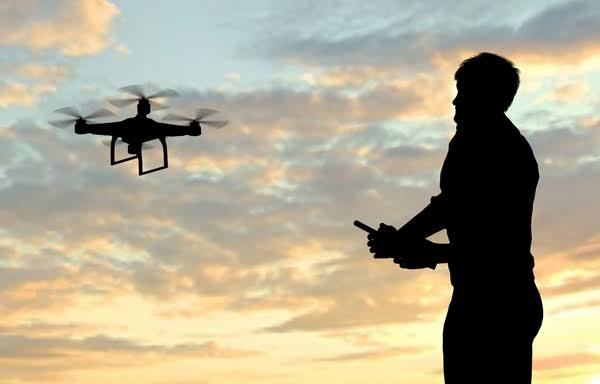Explore the world of aerial videography and discover how drones are revolutionizing visual storytelling. This article discusses the advantages of using drones, essential techniques for capturing stunning footage, and important considerations for planning and post-production. Learn about drone technology, effective shooting strategies, and ethical practices to ensure impactful and responsible videography. Whether for commercial projects or personal creativity, aerial videography offers unique perspectives that engage and inspire audiences.
Aerial videography has revolutionized how we document and share narratives. Thanks to drone advancements filmmakers, marketers and content creators can now obtain breathtaking footage that previously required costly helicopter hires or elaborate rigging arrangements. Drones offer viewpoints that enrich storytelling and offer audiences captivating visuals. This article explores the realm of videography discussing the advantages techniques and factors to consider when utilizing drones for exceptional footage.
The Rise of Aerial Videography
In recent years there has been a surge in the use of videography. This can be attributed to advancements in drone technology and their increased availability. Drones have become smaller, more affordable and user friendly opening up the world of videography to a audience. Whether it's for purposes like real estate, tourism marketing or personal celebrations drones offer a versatile means of capturing breathtaking aerial footage.
A key advantage of videography lies in its ability to showcase landscapes, architecture and events from a perspective. Aerial shots can set the scene, show scale and add movement that captivates viewers. In a landscape where content is everywhere utilizing drones can make a project stand out and leave a lasting impact.
Understanding Drone Technology
To fully utilize the potential of aerial videography it's important to grasp the technology behind drones. Contemporary drones are equipped, with high definition cameras stabilizing gimbals and advanced flight controls making them perfect for capturing smooth and cinematic shots. The quality of the camera plays a role, in drone videography. Many drones now come with cameras capable of shooting in 4K resolution ensuring sharp and detailed visuals. Moreover features like HDR (High Dynamic Range) and adjustable frame rates allow filmmakers to achieve a range of looks and styles. Stabilization technology is another crucial aspect. Gimbals help counteract movements of the drone ensuring footage even in conditions or during sharp maneuvers. This level of stabilization is essential for producing videos that truly engage audiences.
Planning Your Aerial Shoot
When it comes to aerial videography preparation is key. A well organized shoot maximizes efficiency and ensures all necessary elements are in place. Here are steps to consider during the planning phase.
1. Define the Purpose. Understanding the projects goals is crucial. Whether it's capturing a scenic landscape documenting a construction site or creating promotional content having clarity about the shoots purpose guides the creative process.
2. Scout Locations. Getting acquainted with the shooting locations is essential. Visiting the site allows for assessing hazards finding interesting angles and determining optimal shooting times based on lighting conditions.
3. Check Regulations. Drone operators must comply with regulations. Many areas have laws governing drone flights such as altitude restrictions, no fly zones and permit requirements. Ensuring adherence to these regulations is important for a successful and legal shoot.
Weather Conditions: The weather can have an impact on aerial videography. It's important to check forecasts and take into account factors like wind speed, visibility and precipitation to ensure shooting conditions. Clear skies and little wind are ideal for achieving results.
Techniques for Capturing Aerial Footage
After the planning stage filmmakers can use a variety of techniques to enhance their aerial videography:
Experiment with Flight Patterns: Trying out different flight paths can add creativity and energy to the footage. Techniques like flyovers, orbiting and revealing shots can create a sense of movement and engagement, allowing viewers to visually explore the surroundings.
Vary Camera Angles: Changing camera angles during flight can enhance the storytelling element of a video. Shots can provide an intimate feel while high altitude perspectives can showcase landscapes. Combining angles offers a visually captivating experience.
Incorporate Slow Motion: Many drones have the capability to record footage at frame rates. Shooting in motion can give a cinematic touch by highlighting movement and allowing viewers to notice details that might be missed at speed.
Capture Time Lapses Time lapse photography is a way to capture the flow of time like a sunset or the energy of a city. Drones with capabilities can produce beautiful clips that show how a scene evolves over time.
Post-Production Considerations
After capturing footage the post production phase is crucial for shaping the final product. Editing aerial videos requires attention to detail and an understanding of how to showcase the visuals effectively.
Color Grading: Aerial footage often benefits from color grading to enhance its appeal. Adjusting contrast, saturation and color balance can result in a visually striking and cohesive appearance.
Editing for Flow: Creating a smooth flow in the video is important. This involves carefully choosing and arranging shots ensuring seamless transitions and maintaining a rhythm that matches the music or narration.
Incorporating Sound Design: Sound plays a role in enhancing a videos emotional impact. Adding background music, sound effects or voiceovers can enrich the storytelling and elevate the viewers experience.
Maintaining Ethical Considerations
Although aerial videography presents opportunities ethical aspects must be taken into account. Its important to prioritize privacy and ensure that drone usage does not disrupt wildlife or breach regulations. Always obtain consent before capturing footage on property and consider the potential effects on the environment.
Conclusion
The advent of videography has transformed storytelling by providing angles and mesmerizing visuals. Filmmakers can craft captivating aerial shots that resonate with audiences by grasping drone technology, planning meticulously, utilizing approaches and focusing on post production elements. With the progression of drone tech embracing these advancements opens up avenues, for innovation and narrative building in videography. The stunning imagery offered through videography not elevates projects but also fosters a greater appreciation, for our surroundings.
